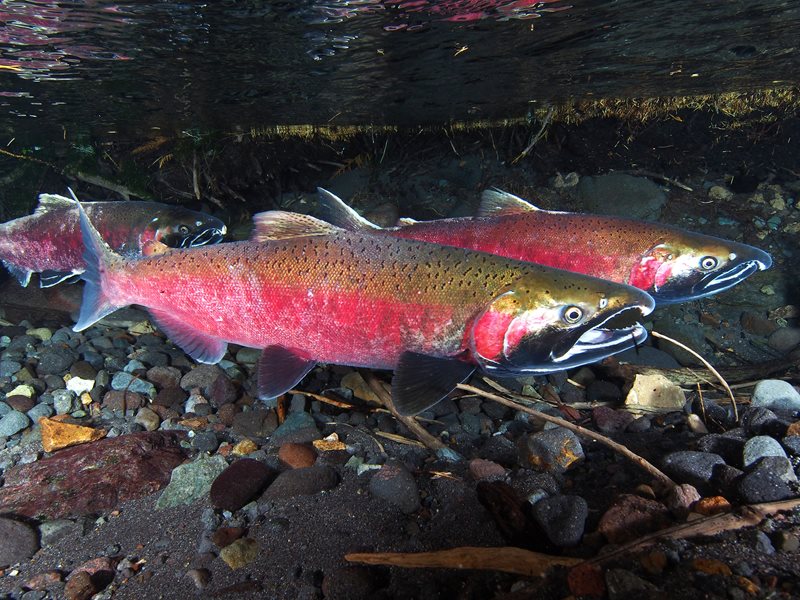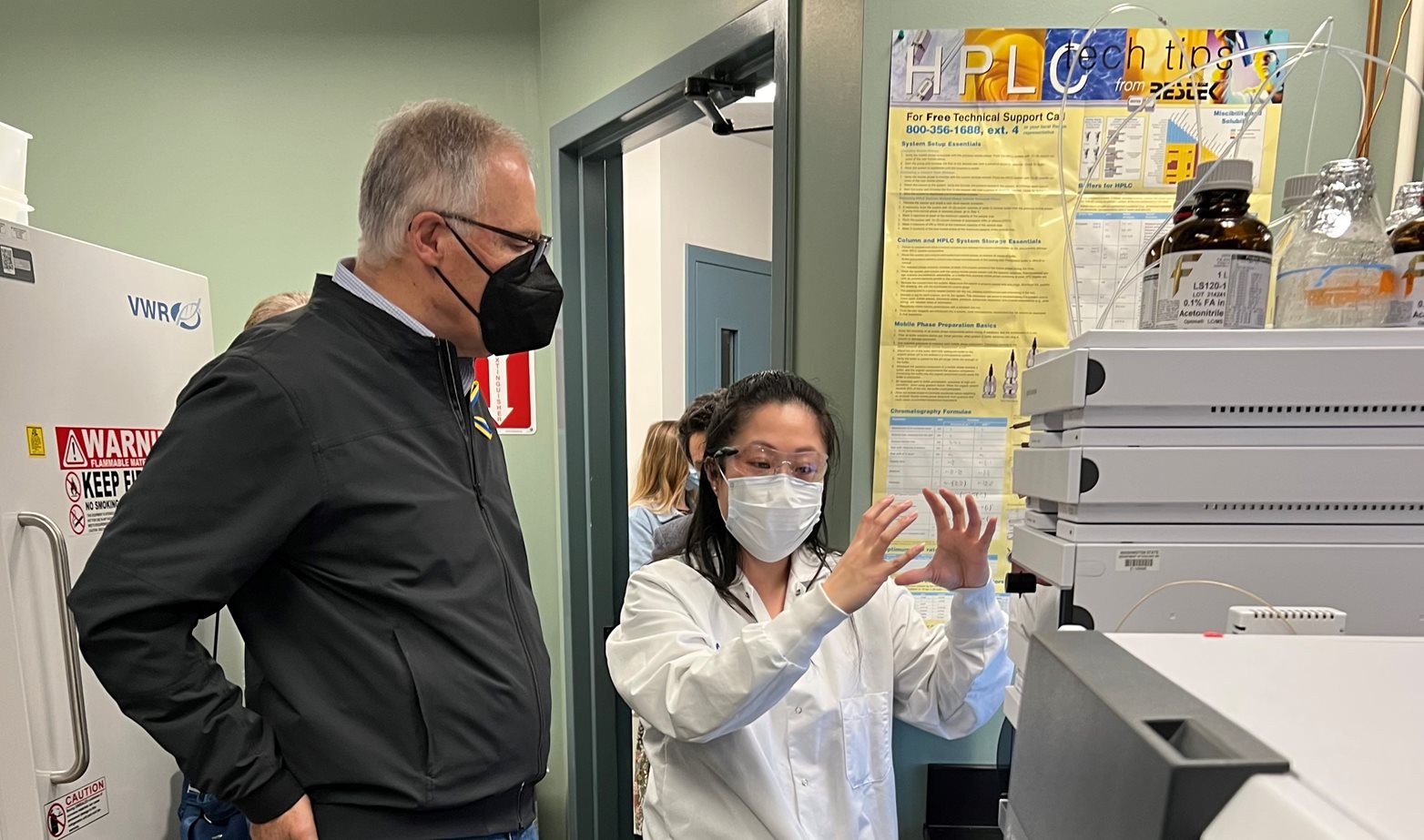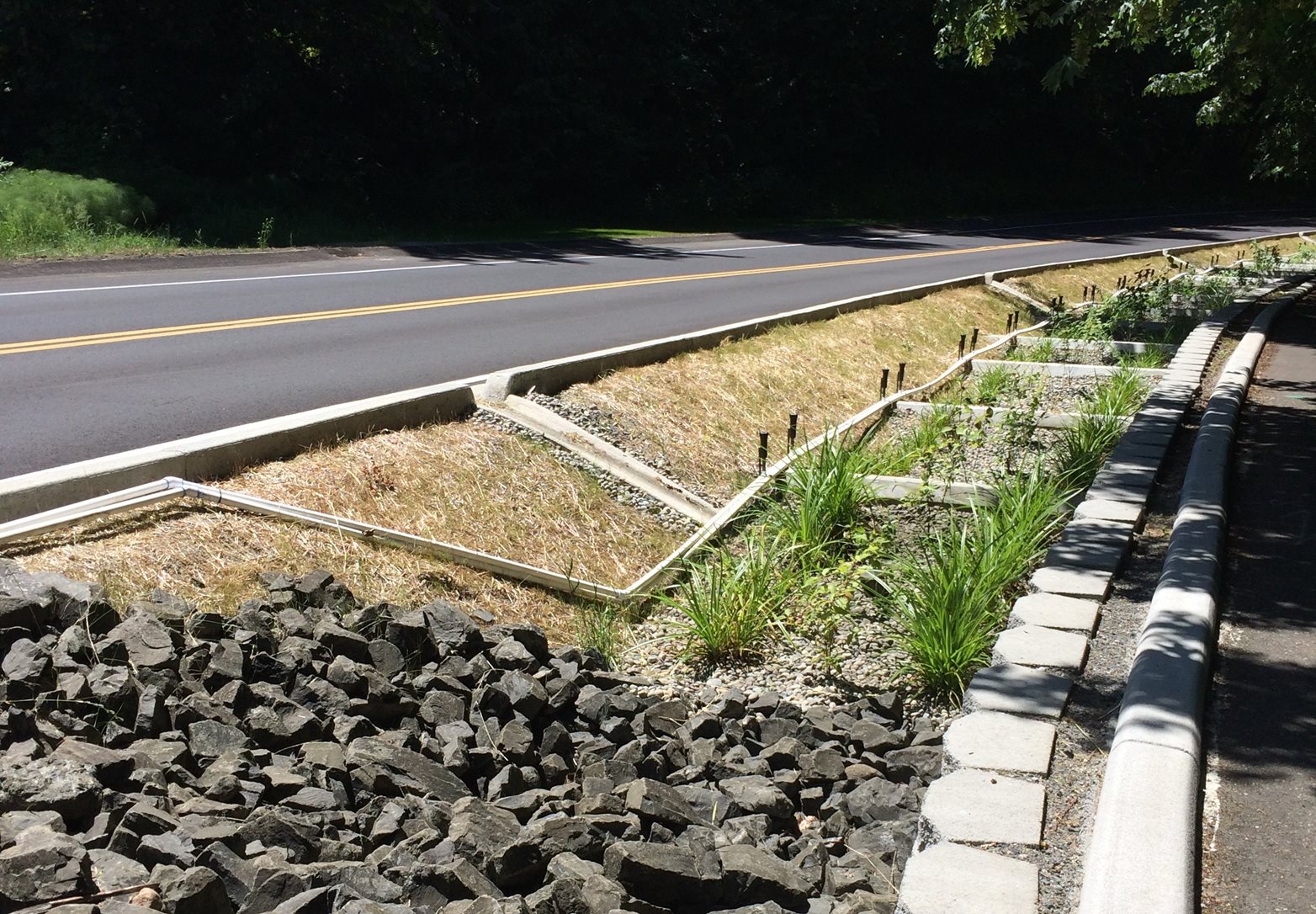
Coho salmon returning to rivers and streams often die before they can spawn. Photo by Roger Tabor, US Fish and Wildlife
For over 20 years, scientists faced a toxic mystery: coho salmon returning to urban streams and rivers in the Puget Sound region were dying before they could lay their eggs. The culprit was unknown, but it seemed linked to toxic chemicals running off our roads and highways.
The fate of the salmon carries weight far beyond that single species. The endangered Southern Resident orca whales rely on salmon for food. Salmon are intertwined with the health and culture of Indigenous communities and are a key part of tribal treaty rights. Washington’s economy and food supply depend on healthy salmon runs. Salmon are important to our well-being.
In 2020, a group of researchers finally made a breakthrough — they pinpointed a specific chemical as the killer: 6PPD-quinone, the last part pronounced "qui-KNOWN," a toxic chemical released from automotive tires that ends up in roadway dust and can run into streams. The chemical is created when 6PPD, a preservative that helps tires last longer, reacts with ozone in the atmosphere.
With a culprit identified, the hard work of reducing contamination from something as widespread as tire dust is now underway. Alongside tribal governments, interest groups, and federal, state, and local organizations, we have begun planning the most effective ways to reduce the amount of 6PPD-quinone going into the water.
Our agency is initially focusing on three key efforts to effectively reduce the threat of 6PPD-quinone to salmon:
- Understanding the problem: Developing scientific methods to measure 6PPD-quinone in the environment and identifying affected areas.
- Reducing stormwater pollution: Identifying stormwater-management approaches to capture and treat 6PPD-quinone and tire debris before it reaches streams, updating guidance for local governments to use, and acquiring more funding for stormwater-management grants.
- Reducing sources of 6PPD: Researching alternate chemical preservatives that could replace 6PPD in tires, and evaluating if these chemicals are actually safer.
Ongoing funding from the Legislature will help us expand our efforts to reduce the harmful impacts from this toxic tire-related chemical.
Using science to understand the problem
Chemist Joan Protasio explains the process for analyzing and measuring 6PPD-quinone in water samples to Gov. Jay Inslee.
We are expanding our laboratory and field-monitoring capacity to understand when, where, and how 6PPD-quinone ends up in the environment. In November 2022, we published 6PPD in Road Runoff: Assessment and Mitigation Strategies, which identifies watersheds in the state that are particularly vulnerable to 6PPD-quinone pollution. The report also summarizes research on actions to reduce the toxicity of 6PPD-quinone.
Our scientists are comparing and analyzing different methods to collect water samples from rivers and streams. We have already developed a laboratory method to analyze these water samples and measure 6PPD-quinone at around one part per trillion, which is like detecting an amount the size of a drop of water in 20 Olympic-sized swimming pools. We aim to establish a study to measure the presence of tire-wear particles and related pollutants like 6PPD-quinone in rivers, streams, and Puget Sound.
There are many questions we still need to answer before we fully understand the old and new challenges we face. The pollution from 6PPD-quinone and tire-wear particles is diffused, which means it comes from many sources and is spread by rainfall and melting snow. We are unsure whether 6PPD-quinone ends up in places other than freshwater and marine environments, such as in mud, plants, or animals — or how long it stays in different environments.
Finding answers to these questions will help us adapt our strategies and take further action to reduce its toxicity to coho salmon.
Reducing pollution in stormwater
Runoff from roads filtered by engineered soil mixes and plants reduces pollutants from entering stormwater infrastructure and receiving waters.
We are identifying practices that reduce stormwater pollution and are testing their effectiveness to capture and prevent stormwater from transporting 6PPD-quinone to surface waters (rivers, streams, and Puget Sound). Conducting science and engineering research on best management practices is essential so we can provide guidance to stormwater permit holders on how to manage tire-wear particles.
In June 2022, we published Stormwater Treatment of Tire Contaminants — Best Management Practices Effectiveness, which presents emerging guidance on this challenge. The publication provides an overview of existing management practices and their anticipated effectiveness to prevent stormwater contamination, slow down and reduce the volume of runoff, and treat stormwater to remove toxicity. Some of the highlighted practices include:
- Capturing tire debris: Sweeping streets to prevent debris and chemicals from entering stormwater drainage systems and the waterbodies they drain to.
- Detaining water: Using stormwater ponds to hold large volumes of stormwater, which slows down runoff, encouraging rubber particles to settle, or using infiltration areas that let water soak into the ground to prevent runoff to surface waters.
- Using physical and chemical treatment processes: Filtering runoff through the soil or grasses in engineered channels before it enters surface waters to reduce the concentration of pollutants.
We recently published Focus Sheet: Best Management Practices for 6PPD-q, which summarizes the studies we have already conducted on these practices. We will continue researching the relative effectiveness of these management practices and will meet with local governments, tribes, interest groups, and community members to incorporate management practices into our stormwater guidance, permits, and funding programs. We will issue more protective stormwater guidance in 2024 to help local governments manage stormwater practices and permits.
Lastly, in 2022, we increased our Municipal Stormwater Capacity grant program funding. With this increase in funding, we hope to better support the work local governments are doing to implement stormwater permits.
Reducing sources of 6PPD pollution
The chemical 6PPD is used as a rubber stabilizer that prevents tires from breaking down while driving and helps them last longer. Photo from pexels.com.
Automotive tires are the primary source of 6PPD and 6PPD-quinone. Our long-term goal is to prevent tires from releasing these toxic chemicals. However, 6PPD is an important ingredient for tire manufacturers: the chemical stops tires from breaking down quickly and helps them last much longer, which keeps passengers safe and minimizes the number of tires in landfills.
Without an effective replacement, 6PPD cannot be removed from tires without significant consequences. We are working hard to find an alternative that provides the same level of tire performance as 6PPD, but that isn’t highly toxic in our environment.
In November 2021, we published a hazard assessment of 6PPD and nine possible alternatives. We are continuing that work to identify a potential alternative and to prioritize steps the state and industry should take to reduce the source of 6PPD pollution.
Solving a pollution problem that is happening every day, on every roadway, from millions upon millions of motor vehicles, requires coordination across state and federal regulatory agencies, tribal governments, industry, research universities and institutions, and interest groups.
We established a forum for these groups to work together to expedite sharing research and new ideas. We are funding research at academic institutions to learn more about 6PPD replacement chemicals and their toxic impact on salmon and other aquatic species. We are also coordinating with tire and chemical manufacturers to better understand 6PPD so that we can make knowledgeable decisions on finding a chemical to replace 6PPD in tires.
Controlling the source of pollution is the most effective way to prevent 6PPD-quinone from entering the environment; however, it will take many years to develop tires that don’t contain 6PPD and never release 6PPD-quinone into the environment.
In the meantime, we will continue monitoring 6PPD-quinone in the environment and will provide guidance and funding to treat stormwater before it enters waterways. Our goal is to lessen the toxic effects of 6PPD-quinone until we can find a safer replacement.
Continuous collaboration
The threat of 6PPD-quinone is an urgent problem that needs dynamic solutions and innovative partnerships. We are developing solutions with partners throughout the state and the nation.
From leading workshops to find safer alternatives, to coordinating with local governments to implement stormwater management practices, to working with researchers to develop a statewide monitoring program — our work includes partners from tribal governments, local governments, state agencies, federal agencies, academic institutions, and industrial organizations.
Solving the mystery behind coho deaths was only the start of a long and difficult process. But if we can succeed, the rewards will be great. Protecting the salmon, restoring the water quality of streams in communities overburdened by pollution, and preserving Washington’s environment, as well as our state’s cultural and recreational values, are all goals worth fighting for.




